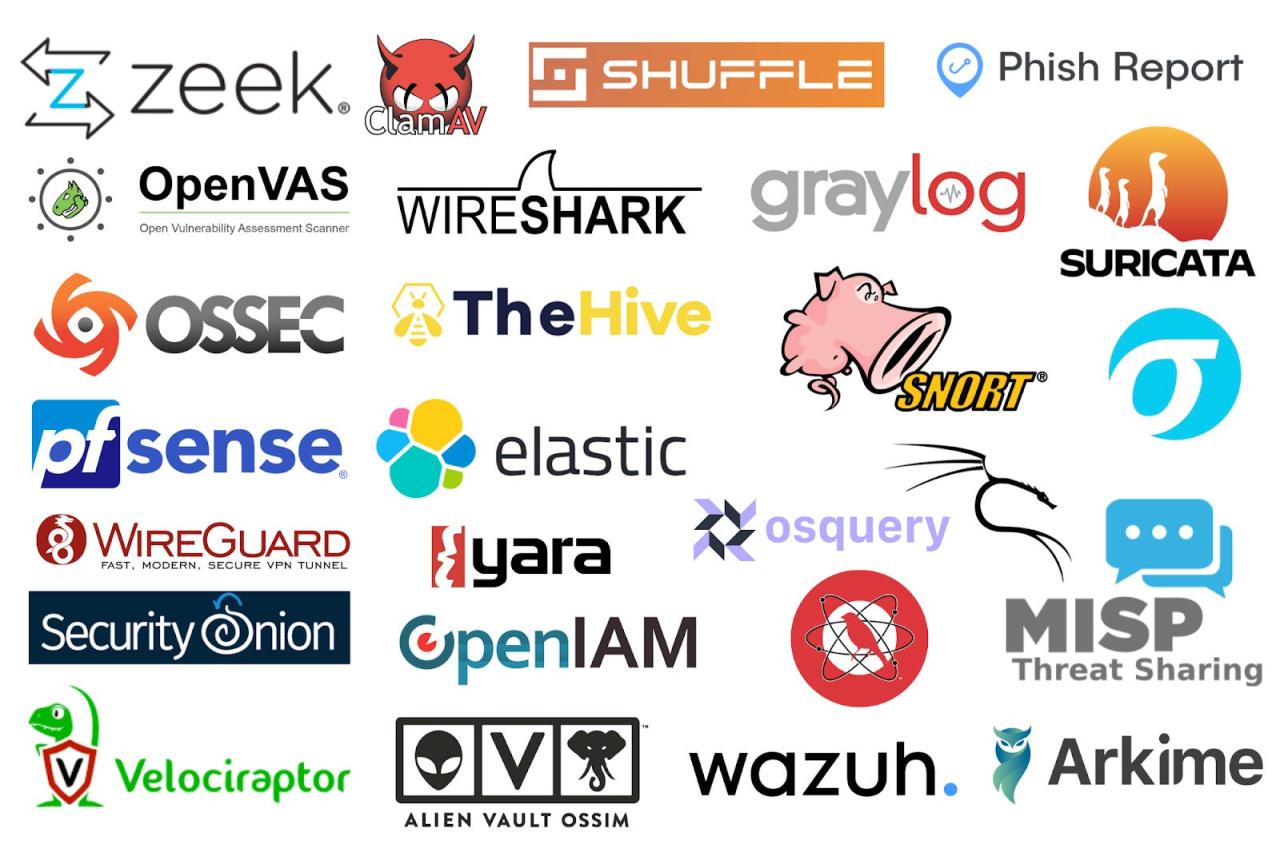In today’s digital landscape, the question isn’t if you’ll face a cyber threat, but when. With attacks becoming increasingly sophisticated and frequent, organizations and individuals alike are constantly seeking robust and cost-effective security solutions. Enter the world of open source cybersecurity tools – a powerful arsenal of defenses readily available to anyone with the know-how.
These tools, built and maintained by a community of developers, offer transparency, flexibility, and often, a price tag that’s hard to beat. But navigating this vast ecosystem can be daunting. This article dives deep into the realm of open source cybersecurity, exploring its benefits, highlighting key tools that can bolster your defenses, and offering practical guidance on choosing the right solutions for your specific needs.
Discover how to leverage the power of open source to strengthen your security posture without breaking the bank, and take control of your digital safety.
Unlocking Security: A Deep Dive into Open Source Cybersecurity Tools
Cybersecurity threats are ever-present in our increasingly digital world. Choosing the right defense is vital. Luckily, there’s a powerful option that many overlook: open-source cybersecurity tools.
These tools offer a unique blend of transparency, flexibility, and community-driven support. Think of them as building blocks, crafted by experts and available for modification.
Open source software allows anyone to examine and change the source code. This fosters collaboration and improvement. Plus, it often comes without the hefty price tag of proprietary software.
Let’s unpack how open-source cybersecurity tools can boost your security posture. We’ll explore the key benefits, common misconceptions, and some valuable tools to consider.
The Power of Transparency: Why Choose Open Source?
Proprietary cybersecurity tools work like a black box. You trust the vendor to have your best interests at heart. Open source tools, on the other hand, reveal their inner workings.
Anyone can examine the code to verify its functionality. This transparency enhances trust and allows for custom modifications. Think of it as having the blueprint to your own security system.
This open nature also fosters a vibrant community of developers and users. Bugs are identified and fixed rapidly. New features are implemented with community needs in mind.
Open source enables you to tailor tools to your specific requirements. Integrate them seamlessly into your existing infrastructure. No more being locked into vendor-specific solutions.
Finally, transparency can make achieving regulatory compliance much easier, since you can easily demonstrate that a given open-source tool is working as it should.
Dispelling Myths: Addressing Common Concerns
One frequent concern is that open-source tools are less secure. This stems from the misconception that revealing the code makes it easier for attackers to find vulnerabilities.
The reality is that the transparency promotes faster vulnerability detection and patching. The community’s collective intelligence acts as a powerful security shield.
Another myth is that open-source tools are difficult to use and maintain. While some require technical expertise, many have user-friendly interfaces and extensive documentation.
Besides, numerous companies offer support and services for these tools. This helps you bridge any skill gaps in your organization and ensure smooth operation.
Lastly, some assume that open source implies a lack of formal security testing. Mature projects often undergo rigorous testing and audits to ensure their reliability.
Essential Open Source Cybersecurity Tools

Several open-source cybersecurity tools can fortify your defenses. These tools span various security domains, like network monitoring, intrusion detection, and vulnerability scanning.
Wireshark, for example, is a powerful network protocol analyzer. Capture and dissect network traffic. It helps you identify suspicious activity and troubleshoot connectivity issues.
Snort functions as an intrusion detection and prevention system (IDS/IPS). Analyze network traffic for malicious patterns and block or alert on suspicious activity in real time.
Nmap is a network mapper and port scanner. Discover devices on your network and identify open ports and services. This provides a clear picture of your attack surface.
OpenVAS (Open Vulnerability Assessment System) is a comprehensive vulnerability scanner. Identify security weaknesses in your systems and applications. It helps you prioritize remediation efforts.
Suricata is another popular intrusion detection system (IDS) that excels at real-time threat detection by combining signature, protocol, and anomaly-based inspection.
Integrating Open Source Tools: A Practical Approach
Integrating open-source tools requires careful planning. Start by identifying your specific security needs and pain points. This will guide your selection process.
Next, evaluate different tools based on their features, performance, and ease of use. Consider your team’s existing skill set and training requirements.
Before deploying tools to production, test them in a controlled environment. This prevents unintended disruptions and allows you to fine-tune configurations.
Document your configurations and procedures to ensure maintainability. Automate tasks wherever possible to improve efficiency. This reduces the workload on your team.
Actively monitor the performance of your open source tools to ensure they’re working as expected. Keep them updated with the latest security patches to mitigate emerging threats.
The Future is Open: Embracing a Collaborative Approach
Open source cybersecurity is a continually evolving landscape. New tools and techniques emerge frequently. Staying informed is vital for success.
Engage with the open-source community. Participate in forums and mailing lists. This allows you to learn from others and contribute your own expertise.
Consider contributing to open-source projects. This strengthens the ecosystem and enhances your skills. It’s also an excellent way to network with other security professionals.
By embracing open source, you’re contributing to a more secure digital world. A world where knowledge is shared freely and security is a collective responsibility.
Ultimately, open-source cybersecurity tools empower you to take control of your security. They provide the transparency, flexibility, and community support needed to stay ahead of the evolving threat landscape.